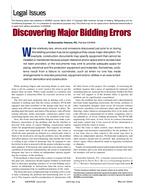Click here to purchase
Frost development in heat exchanger coils is a common challenge in refrigeration and becoming increasingly important in heat pumps as technology is evolving and considered for cold climate. Frost reduces heat exchanger performance by impeding airflow and adding thermal resistance, therefore taxing the system, consuming more energy to satisfy temperature setpoints. Accordingly, heat pump systems have defrost cycles, which involve systems that consume extra energy to melt away the impeding frost/ice layer on coils. Tackling frost reduction and/or mitigation is key for developing high-efficiency heat pumps, further enabling their widespread adoption. This paper presents a systematic approach for testing three heat exchanger coil designs to evaluate the impact of frost among fin types and densities separately, under multiple air moisture conditions. Aluminum fin stock samples were coated by a variety of coating vendors for preliminary testing. This involved (a) an ice adhesion test to measure the maximum amount of shear force required to remove ice from the surface; and (b)??cyclic corrosion testing (CCT-4 standard) with periodic contact angle measurements to characterize durability of coatings in real-world environments.??Coating A and Coating B were then chosen for a comprehensive frost development assessment in a testing loop. Identical heat exchanger coils were then??coated and tested with Coating A, a (super)hydrophobic product and Coating B, an icephobic product. Airside pressure drop and frost development time??were the main metrics used for performance degradation assessment. The results showed that both coatings significantly reduced the performance degradation??due to frost.
Citation: 2021 Virtual Conference Papers
Product Details
- Published:
- 2021
- Number of Pages:
- 9
- File Size:
- 1 file , 3.9 MB
- Product Code(s):
- D-VC-21-C058


